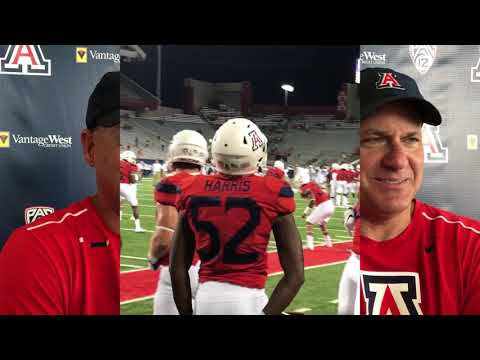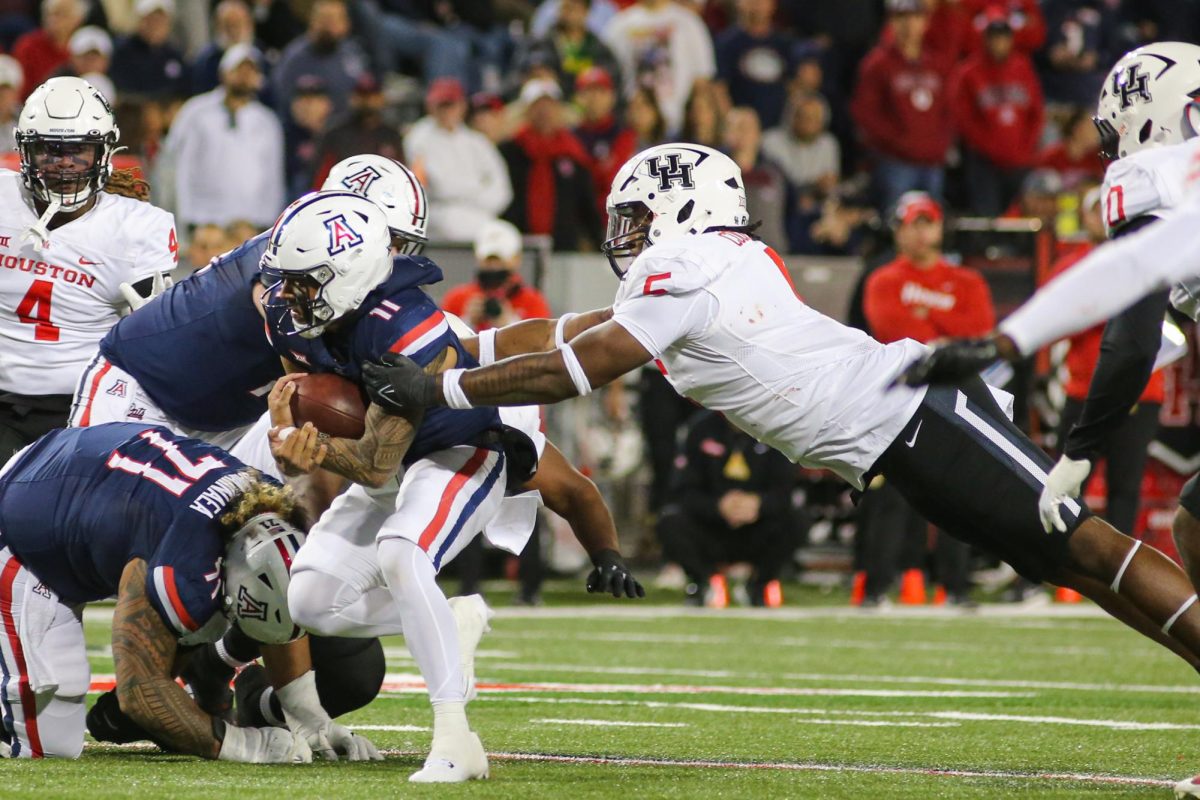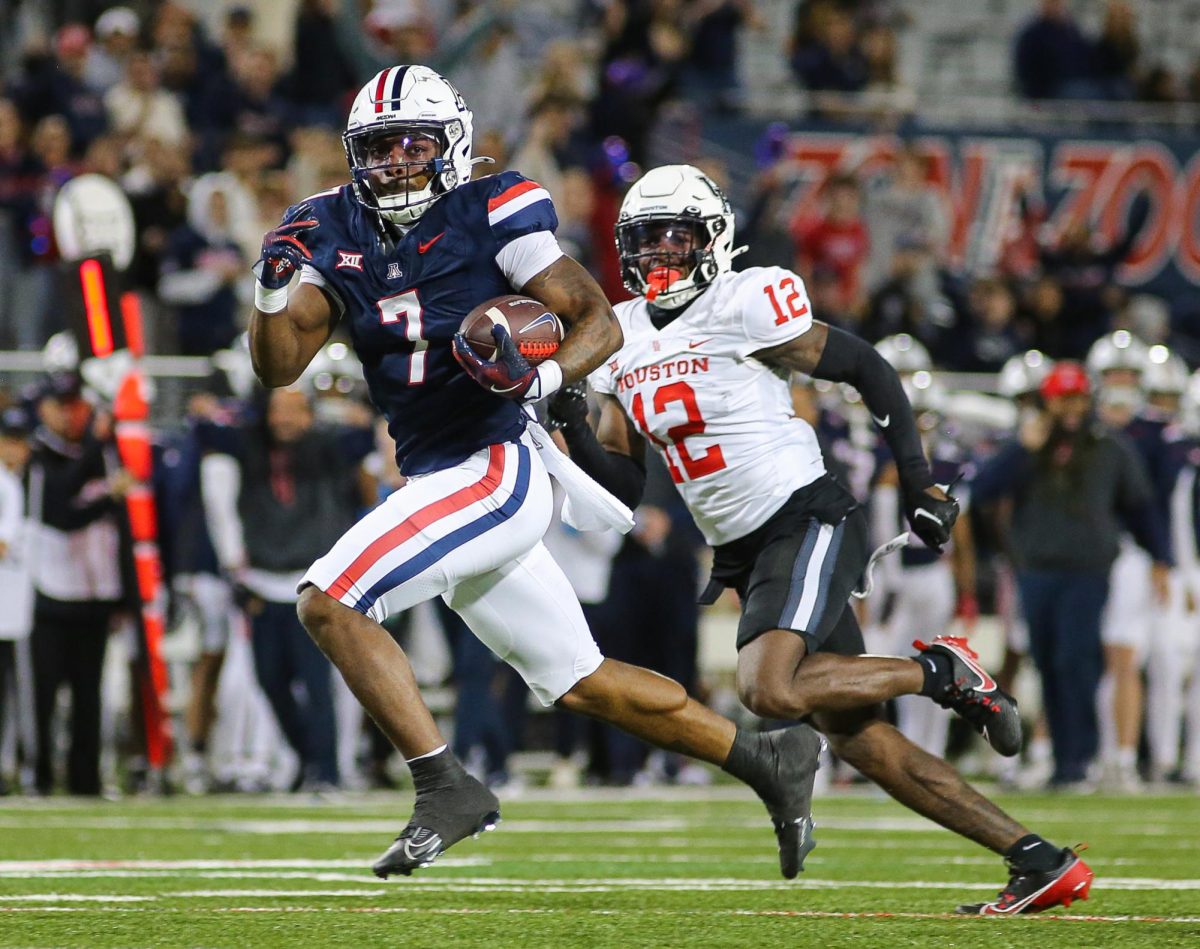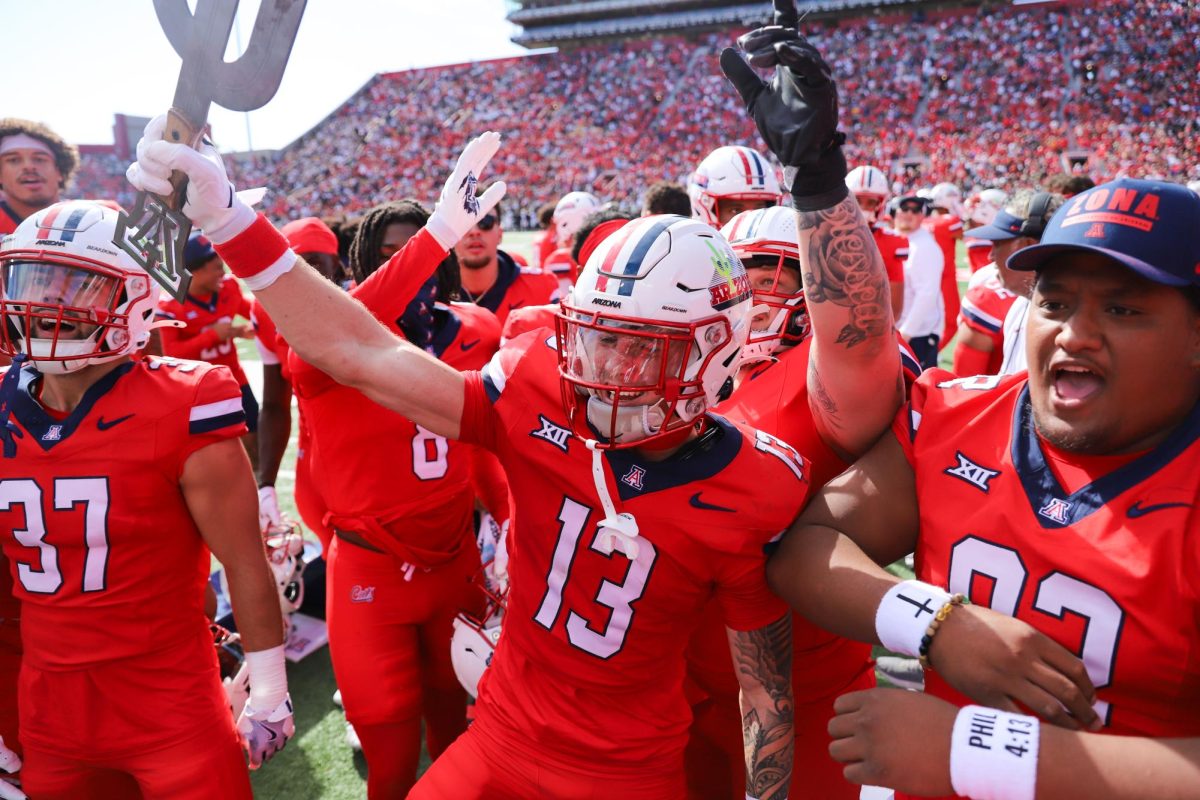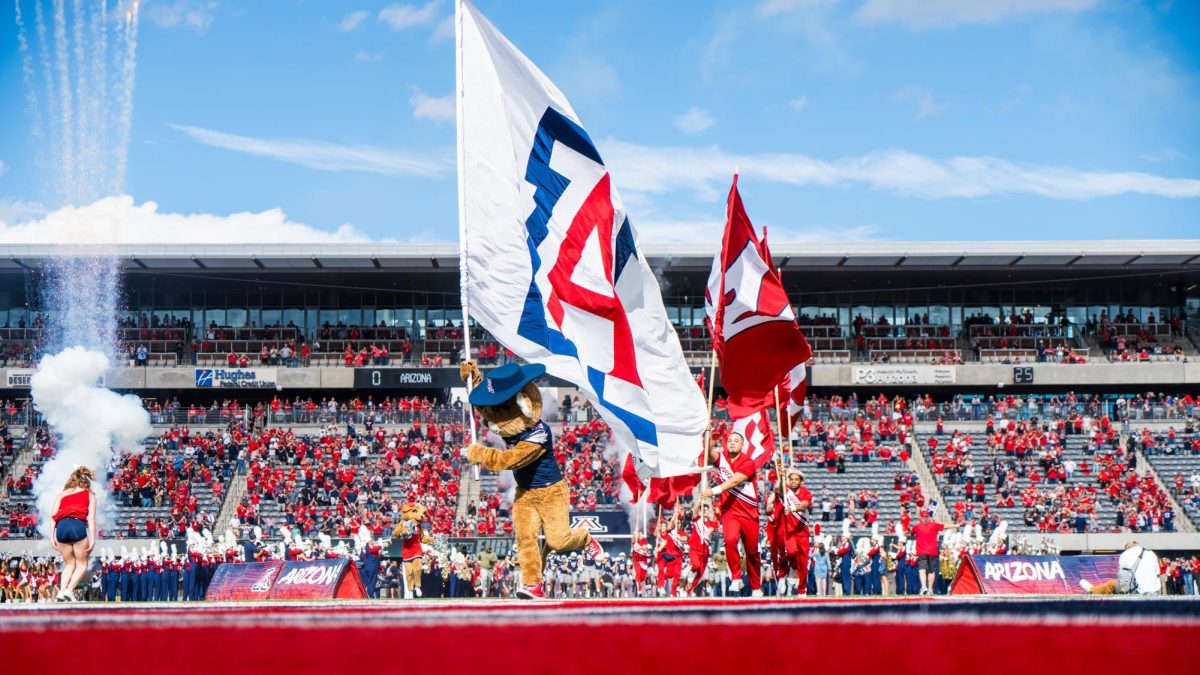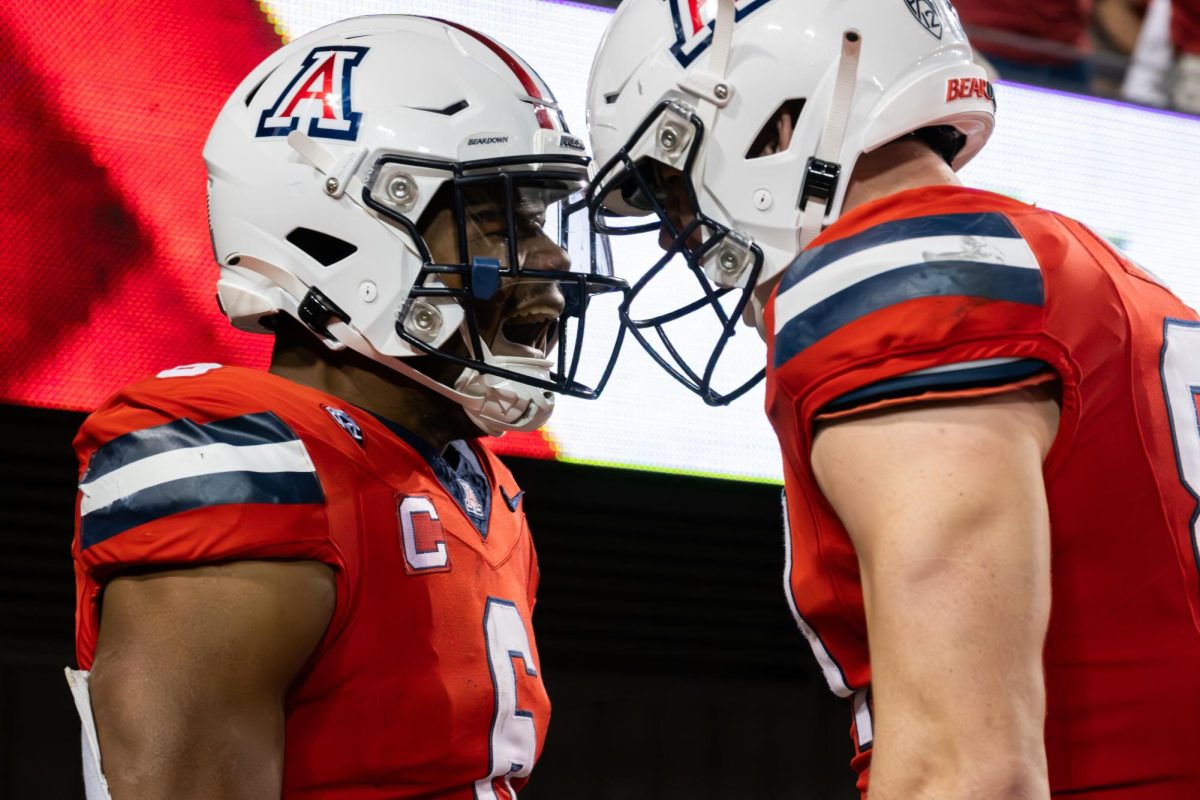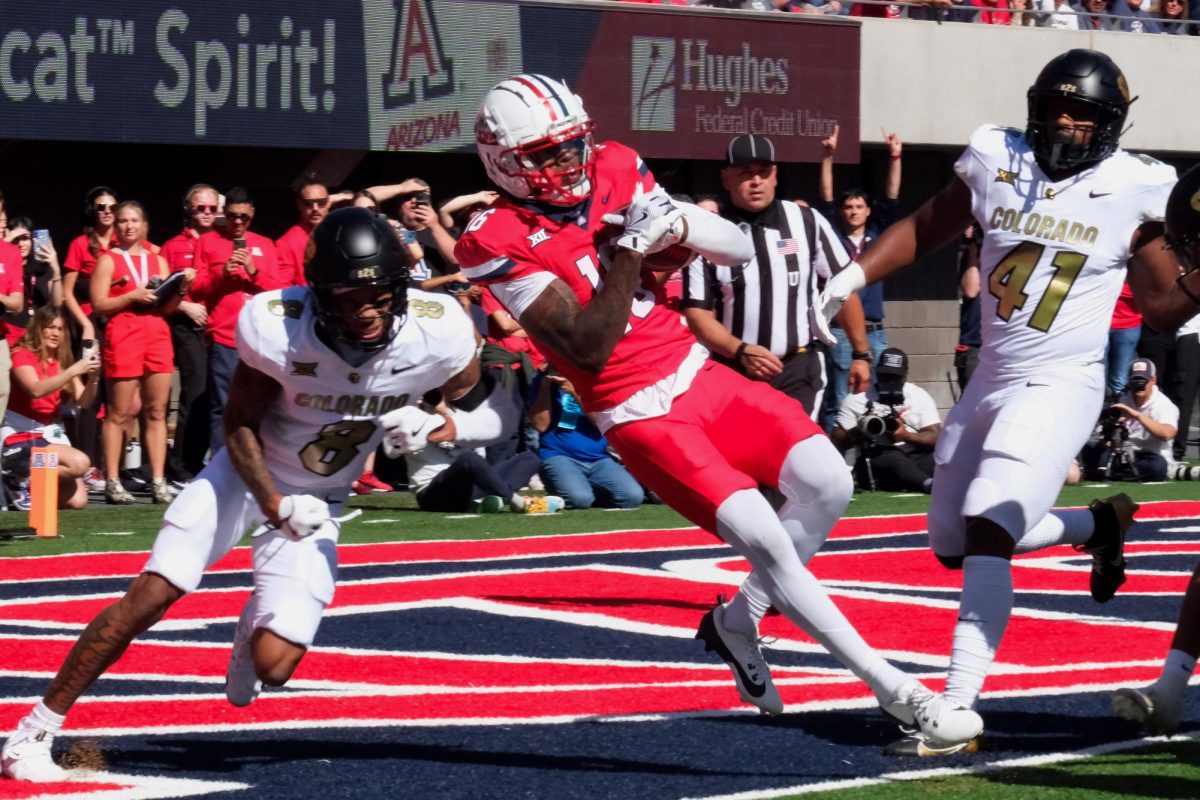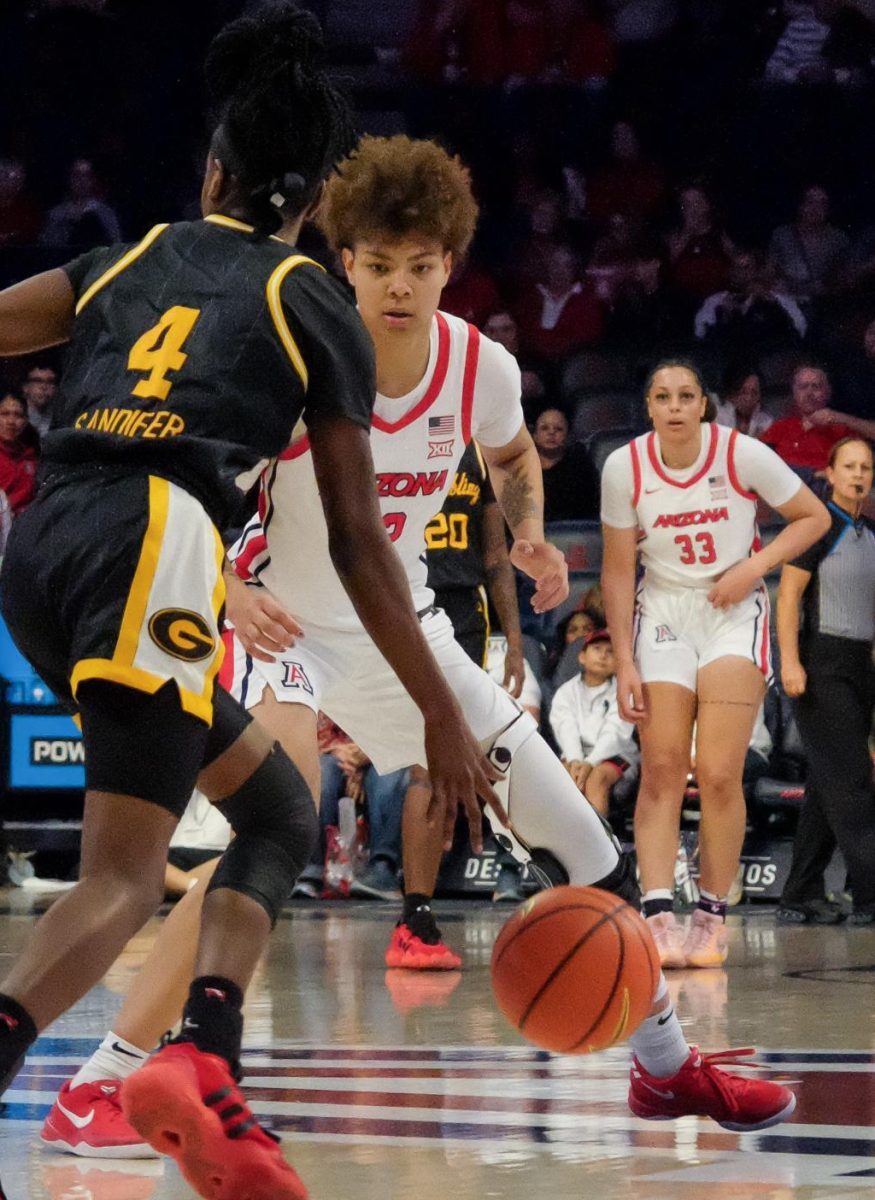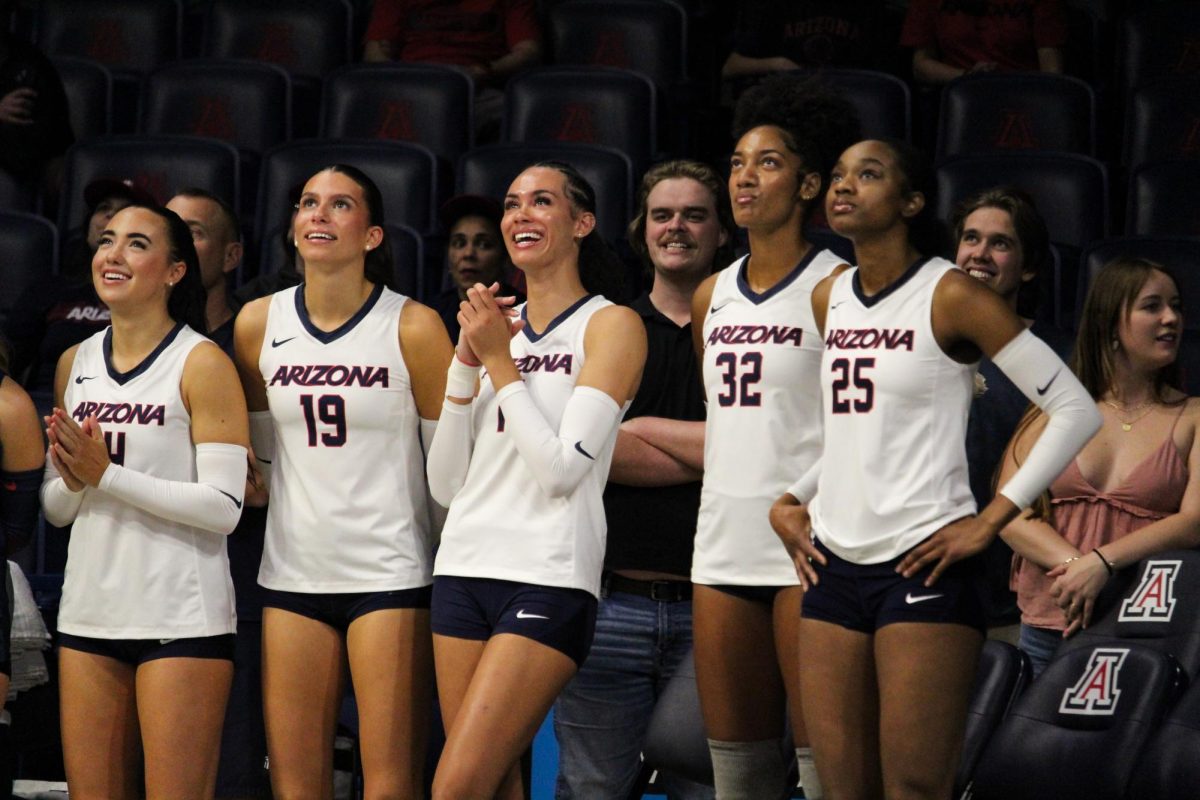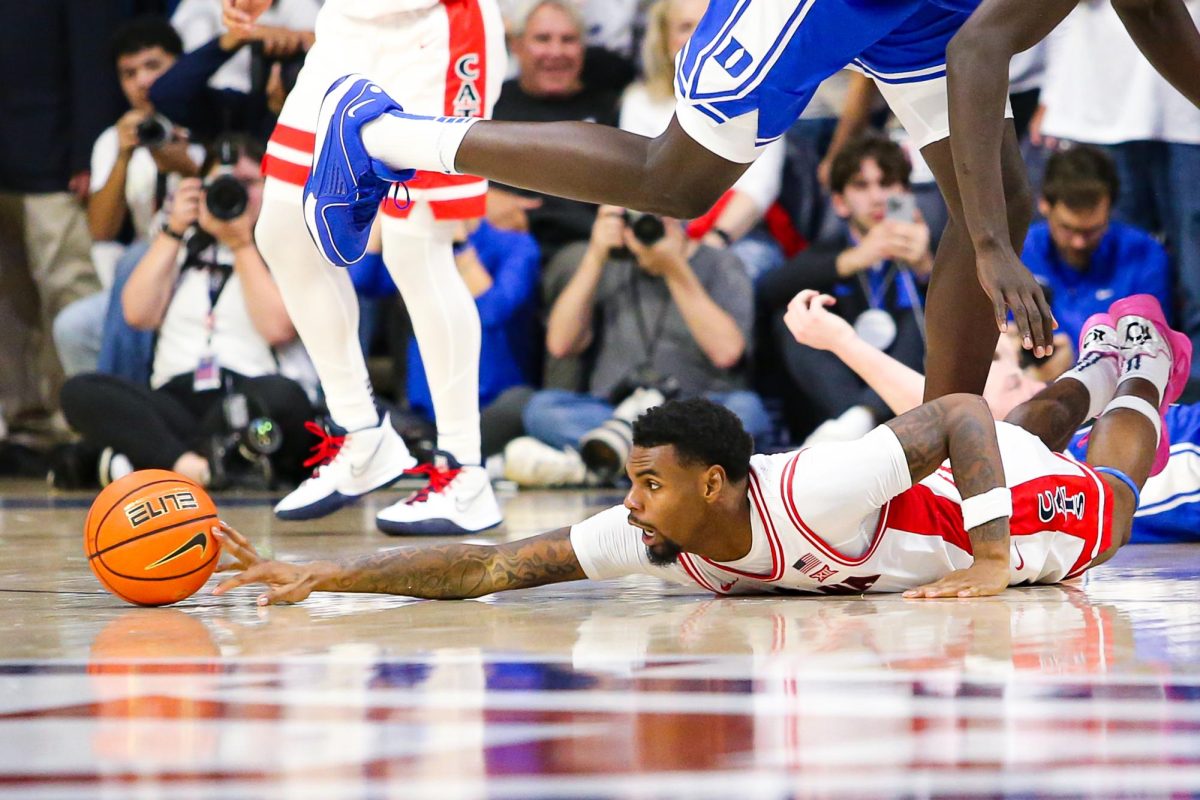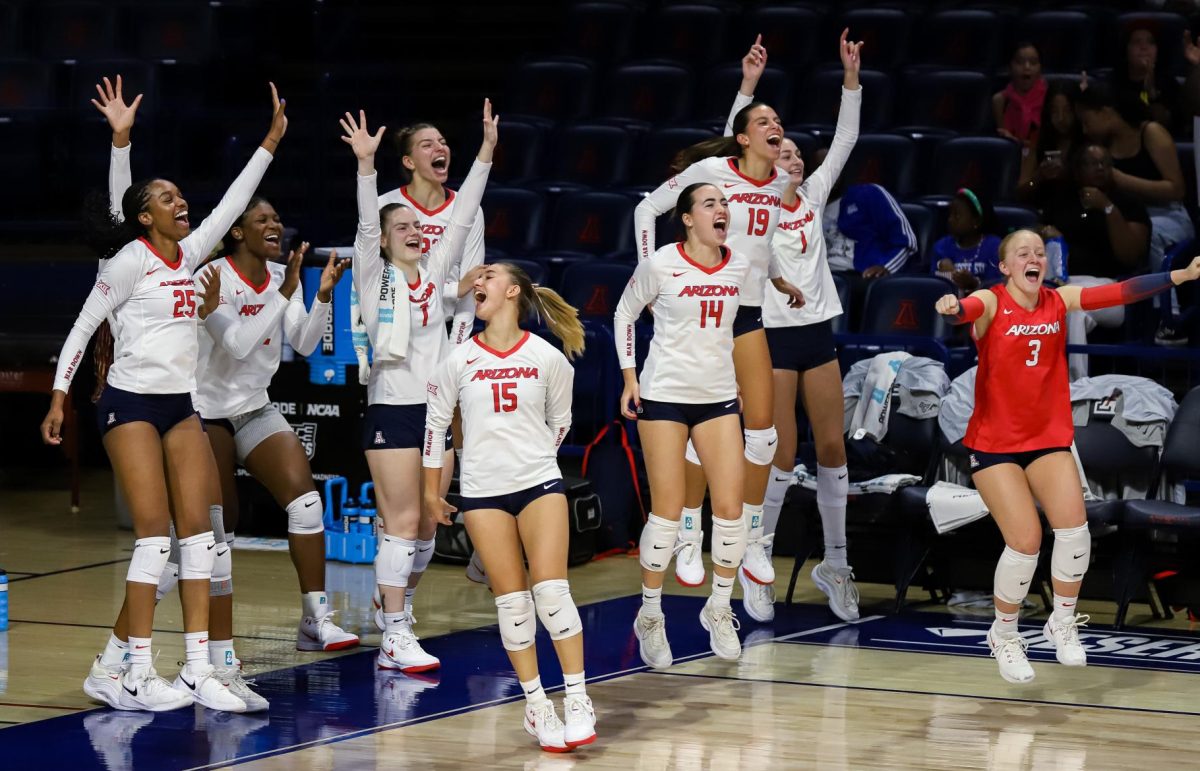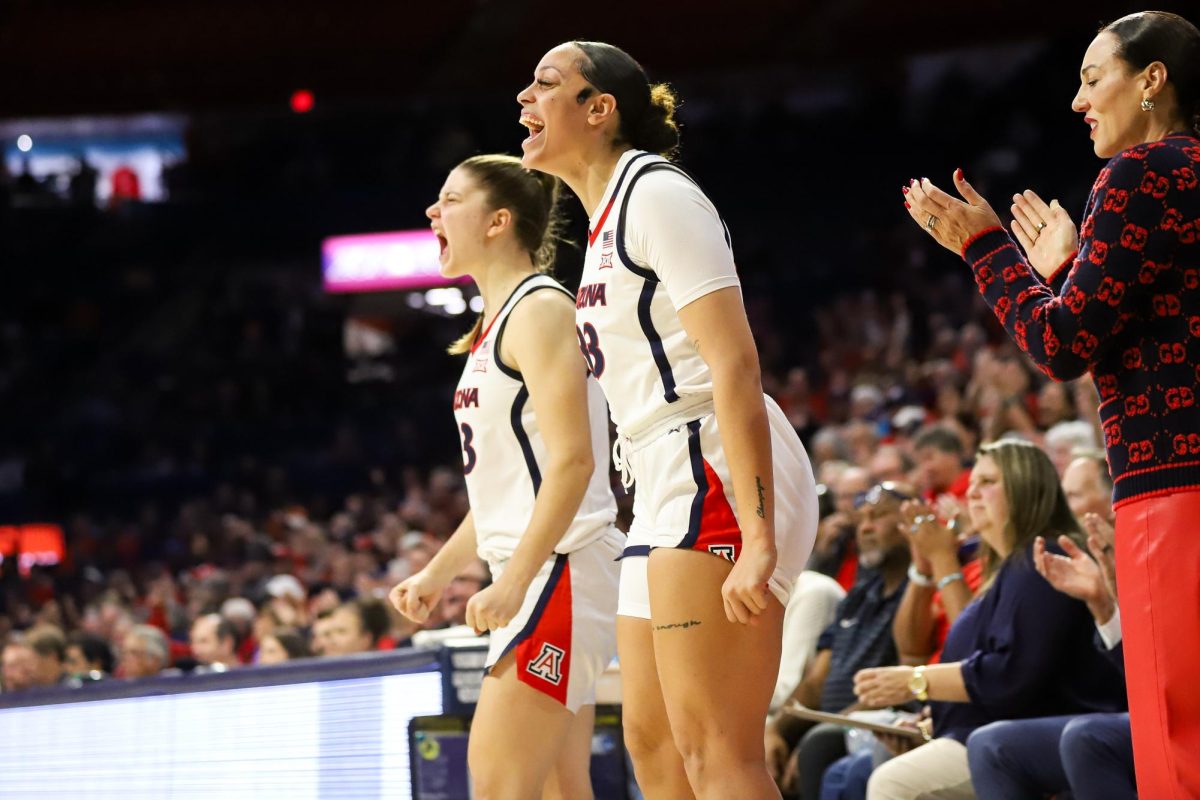Despite what the NCAA rulebook says, UA football players find ways to keep the fun infootball alive. As referees in both collegiate and professional football continue to crack down on in-game celebrations, the power of music keeps players and coaches ready to dance through the season. It is also not a coincidence that most of the dancing occurs before the ball is even kicked.
Football and music, while so drastically different, blend together as one on game day. The saying opposites attract could not be more true here. The violence, power and unpredictability of football meets the structured and planned out timing of music that creates a type of grounding atmosphere for both players and coaches.
In a sport that features over 50,000 passionate fans yelling down at a piece of turf, 300 pound men flying through the air and coaches giving out orders left and right, players actually look for more noise to keep them cool, calm and dancing.
The music blasting through Arizona Stadium’s speakers provides players like starting quarterback Brandon Dawkins stability under the bright lights.
“I like to stay as loose as I can and make sure I’m not shelling up and thinking too much,” Dawkins said. “I want to be able to play loose and be loose.”
Dawkins looks at celebrating like a routine, explaining that making a big play on offense and the excitement that comes with it, gets the defense ready to go out there.
While music and dancing is allowed in practice, the locker room and during warm-ups, the NCAA rules committee draws the line during the game. An issue that both the NCAA and NFL have today is dancing after scoring a touchdown or to celebrate a big play.
Players over the last 20 years in the NFL like Terrell Owens, Chad “Ochocinco” Johnson, Cam Newton, Rob Gronkowski , Odell Beckham Jr. and Antonio Brown have really pushed the envelop on touchdown celebrations. These players have created something that all fans can take place in and feel like they are a player for a moment.
Even though these players have created a cultural movement around the way they dance with moves such as the “dab” and the “whip”, referees still throw a penalty flag when dancing starts to get excessive. See Antonio Brown of the Pittsburgh Steelers.
NCAA rule 9-2 penalizes excessive celebrations with a 15-yard penalty, the rule also prohibits any delayed, excessive, prolonged or choreographed act.
At last weekend’s game against the NAU lumberjacks, Dawkins knew he would have to keep his post touchdown celebrations to a minimum.
“I celebrate a little bit maybe a little bit too much at times….I just like to rally the troops,” Dawkins said.
Coaches in college football have several different opinions toward dancing, but when it comes to UA head football coach Richard Rodriguez, he is all for it.
“That’s part of the kid’s culture now very rarely do you see them walking around without their headsets in,” Rodriguez said. “If it helps them loosen up, they can dance all they want as long as they keep their focus.”
Music isn’t just for the player, Rodriguez talked about his own taste in music touching on the fact he likes using Pandora and frequents the Eagles and Prince radio playlists often. Rodriguez even talked about incorporating music in the practice plan saying the Wildcats should use music more often as far as when the offense has the ball and were trying to distract them.
As the battle between rules and fun continues to go on throughout NCAA and NFL football it seems like the fun isn’t going away anytime soon. Arizona’s program, judging by how Rodriguez looks at it, will continue to have a good time.
Follow Cory Kennedy on Twitter



